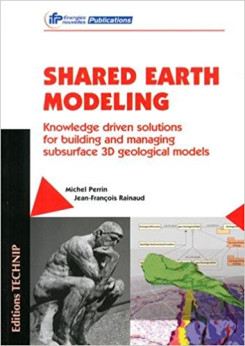Shared Earth Modeling
Over the last two decades, earth modeling has become a major investigative tool for evaluating the potential of hydrocarbon reservoirs. Current modeling procedures provide no way to link a range of data and interpretations with a final earth model, and sharing and exchanging information about the model building process is at present a major difficulty. Recently, the term Shared Earth Modeling has been used to express the idea that earth models should be built so that experts and end users can have access to all the information incorporated into the model. This information not only concerns the data, but also the knowledge that geoscientists produce by interpreting these data. Accordingly, practical solutions must be studied to determine a way to operate a knowledge-driven approach to Shared Earth Modeling, which is the goal of this book. Relying on recent progress in various fields of computer science, the authors present innovative solutions for solving the critical issue of knowledge exchange at key steps of the modeling process.
- Genre: All Books, Geomodeling
Cast & Characters
Earth Models
Knowledge oriented solutions
Knowledge formalization
Knowledge management & applications
| 3-24 | Earth models as subsurface representations |
| 25-48 | Earth models for underground resource exploration and estimation |
| 49-70 | Earth models used in petroleum industry: current practice and future challenges |
| 71-94 | Knowledge based approach of a data intensive problem: seismic interpretation |
| 95-114 | Individual surface representations and optimization |
| 115-140 | Geological surface assemblage |
| 141-166 | 3D Meshes for structural, stratigraphy and reservoir frameworks |
| 167-188 | The data extension issue: geological constraints applied in geostatistical processes |
| 189-206 | Ontologies and their use for geological knowledge formalization |
| 207-231 | Ontologies for Interpreting geochronological relationships |
| 232-260 | Building ontologies for analyzing data expressed in natural language |
| 261-280 | Ontology-based rock description and interpretation |
| 281-306 | Ontology integration and management within data intensive engineering systems |
| 307-328 | Earth modeling using web services |
| 329-356 | Full scale example of a knowledge-based method for building and managing an earth model |
| 357-364 | Conclusion |

